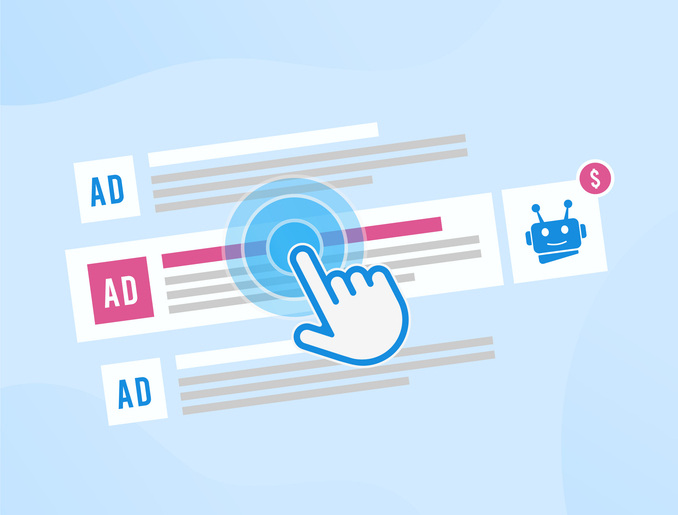Your product or service has evolved over the last several years…but should you focus on organic SEO or invest in Google Ads?
This decision is pivotal in crafting an effective online marketing strategy. With technological advancements and shifting consumer behaviors, the stakes are higher than ever.
Organic SEO involves optimizing website content to naturally improve search engine rankings, while Google Ads provides a paid advertising avenue to target specific audiences. Each approach presents distinct advantages and challenges, necessitating a strategic evaluation.
By examining current trends and best practices, businesses can gain the insights needed to enhance their online visibility and effectively connect with their target audience. It starts with exploring how understanding the nuances of organic SEO and Google Ads can help your business thrive in this competitive digital age.
Understanding Organic SEO
Organic SEO is the backbone of digital marketing, crucial for businesses aiming to boost their online presence and attract quality traffic. A robust SEO strategy includes several core elements that work together to improve a website's visibility on search engine results pages (SERPs).
- Keyword Research: This is the starting point of any successful SEO campaign. Identifying high-value keywords that align with what your target audience is searching for helps tailor your content to meet user intent, driving organic traffic and increasing conversion potential.
- Content Creation: High-quality, informative and engaging content is king. It not only attracts visitors but also encourages backlinks and social shares, extending your website's reach and authority.
- On-Page SEO: This involves optimizing individual web pages to rank higher and earn more relevant traffic. Techniques like internal linking, URL optimization and image alt text utilization all contribute to a healthier SEO profile and a better user experience.
- Off-Page SEO: Building your website’s authority through backlinks, brand mentions, and positive reviews from credible sources enhances your site's trustworthiness in the eyes of search engines.
- Technical SEO: Ensuring your website is accessible to search engine crawlers and offers a seamless user experience is vital. This includes having a clear sitemap, fast loading times, secure HTTPS connections and mobile responsivness.
When integrated strategically, SEO and PPC (Pay-Per-Click) can synergize to deliver comprehensive SEM (search engine marketing) results. While SEO focuses on long-term organic growth, PPC can provide immediate visibility and traffic, creating a balanced approach to digital marketing.
By mastering these components, businesses can improve their search engine rankings, attract organic traffic and boost their online visibility and brand awareness.
Understanding Google Ads
Google Ads is a powerful tool that businesses can leverage to reach their target audience effectively. Let's dive into the basics of Google Ads, explore its benefits and understand the key components of running a successful Google Ads campaign.
Definition and Basics
Google Ads, formerly known as Google AdWords, is an online advertising platform by Google. It allows businesses to create ads that appear on Google’s search engine and other Google properties. These ads are shown to users searching for products or services relevant to what the advertiser offers.
Benefits of Google Ads
One of the biggest advantages of Google Ads is its precise targeting capabilities. You can tailor ads based on keywords, location, demographics, and more. The pay-per-click (PPC) model ensures that you only pay when someone clicks on your ad, making it a cost-effective way to track ROI and optimize your campaigns.
Key Components of an Effective Campaign
Successful Google Ads campaigns hinge on several factors. Start with thorough keyword research to find relevant search terms. Craft compelling ad copy to entice clicks. Strategic bidding helps maximize ad visibility, and continuous monitoring allows for ongoing optimization. By focusing on these elements, businesses can create impactful campaigns that drive traffic and conversions.
Beyond the basics, businesses can further enhance their Google Ads campaigns by utilizing ad extensions to provide more information to potential customers, implementing conversion tracking to measure the effectiveness of their ads, and utilizing remarketing strategies to re-engage users who have previously interacted with their website.
If you need more insight for your PPC campaign, check out How B2B Tech Marketers Can Increase CTR and Lower CPC in Google Ads.
Determining the Right Approach: SEO or Google Ads?
When deciding between Organic SEO and Google Ads, consider several key factors:
Business Goals: Are you focused on long-term brand building or short-term sales? Budget constraints and financial planning play a role here.
- Market Competition: Analyze the competitive landscape for both organic and paid search, including keyword competition and cost-per-click analysis.
- Current Website Performance: Conduct an SEO audit and assess existing traffic and the performance of any ongoing Google Ads campaigns.
- Audience Behavior: Understand the search intent and user journey, along with the demographics and psychographics of your target audience.
- Industry Trends: Keep an eye on seasonal variations, industry-specific trends, algorithm updates and ad policy changes.
You also must evaluate keyword performance. We like Google Keyword Planner, SEMrush or Ahrefs for this. Plus, you need to analyze SERP features and competition for selected keywords to identify opportunities for improvement.
There are many benefits to combining SEO and Google Ads including enhanced visibility, improved click-through rates and comprehensive keyword coverage.

Got It. I Need Both. Now What?
Integrating Organic SEO and Google Ads can be a powerful strategy to maximize online visibility and drive targeted traffic to your website. It boils down to optimization and enhancement.
SEO Tips
To stay ahead of the competition and ensure sustainable growth, it is essential to implement advanced techniques that can maximize Organic SEO results. Focus on long-tail keywords, optimizing for voice search, enhancing user experience and leveraging structured data markup to start.
Then get into the data. Analyze key metrics such as website traffic, bounce rates, conversion rates and keyword performance. These metrics tell a story and help you refine your SEO strategy and make informed decisions.
But that means you then have to adapt to algorithm changes and changing trends. Creating high-quality, engaging content that resonates with the target audience not only improves search engine visibility but also establishes credibility and authority in the industry. Moreover, incorporating multimedia elements such as videos, infographics and interactive tools can enrich the user experience and increase engagement, leading to higher organic traffic and improved search rankings.
Finally, acquiring backlinks from reputable and relevant websites signals to search engines the credibility and trustworthiness of a business's website, positively impacting its search rankings.
Google Ads Tips
This requires its own set of research, targeting and adjustments. A/B testing is a crucial tool for optimizing Google Ads campaigns. By testing different ad variations and analyzing the results, businesses can identify which elements resonate best with their target audience and drive the most conversions.
Remarketing and audience segmentation are powerful strategies for re-engaging with website visitors and targeting specific groups of users with tailored ads. Create custom audiences based on user behavior and interests to deliver personalized ad experiences that resonate with potential customers.
Ad extensions provide more value through sitelink extensions, which provide links to specific pages; callout extensions, which highlight key selling points; and structured snippet extensions, which showcase specific aspects of products or services. These extensions enhance ad performance and drive more qualified traffic to websites by making ads more informative and appealing to users.
Finally, Google Ads are anything but set it and forget it. You need to continuously monitor and analyze key performance metrics. Determine the metrics that matter most to you and then watch the ads. As much as possible, avoid knee-jerk reactions and changes that impact the ads’ trajectory…and can waste money.
Conclusion
The decision between investing in organic SEO or Google Ads continues to be crucial for businesses aiming to enhance their online presence. While organic SEO offers long-term benefits and credibility, Google Ads provide immediate visibility and targeted reach.
Ultimately, a balanced approach that integrates both strategies based on specific goals and budget constraints is likely to yield the best results in navigating the current SEO and paid ad landscape of 2024.
Need help with your SEO strategy? Reach out to us today!






